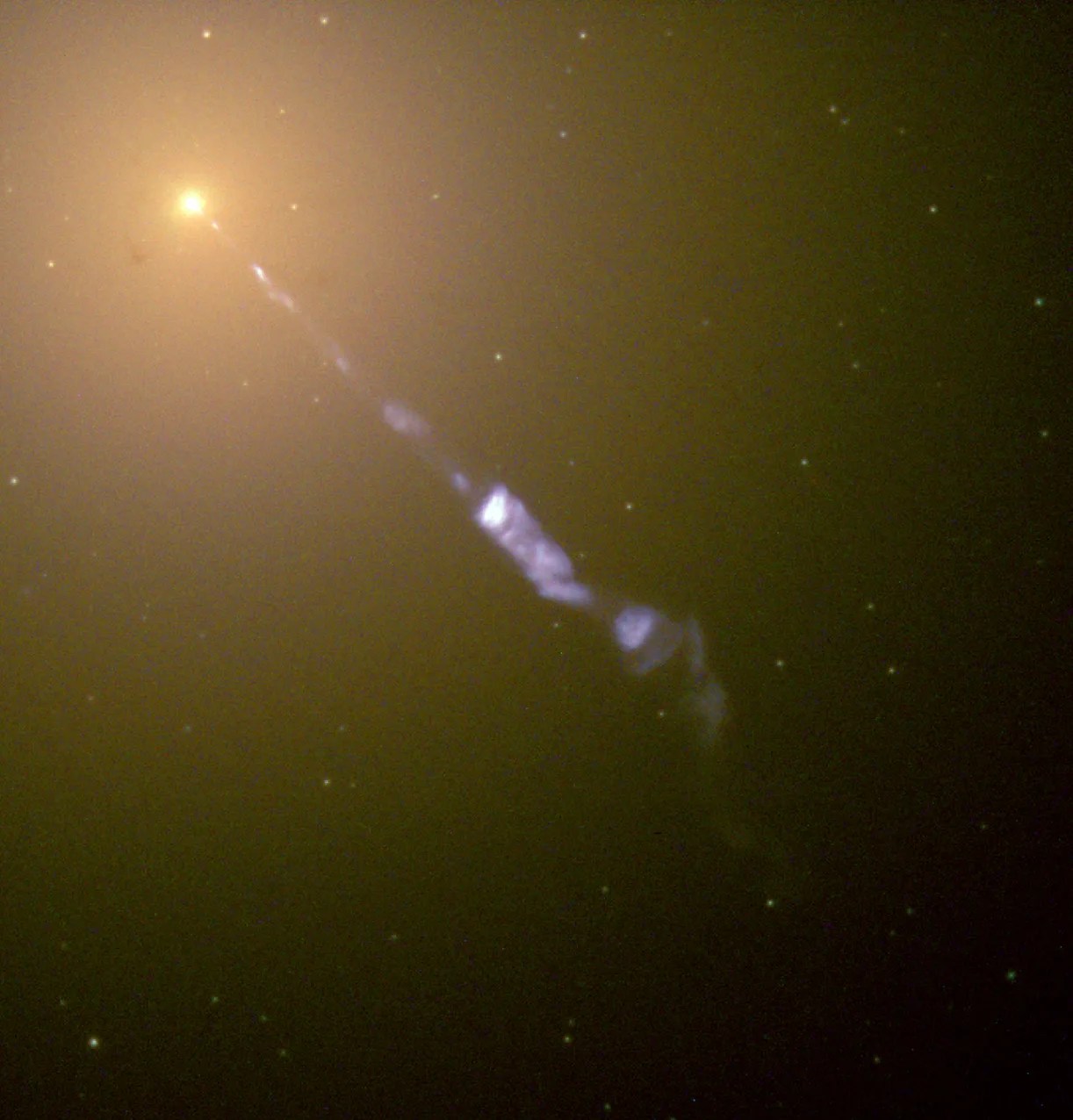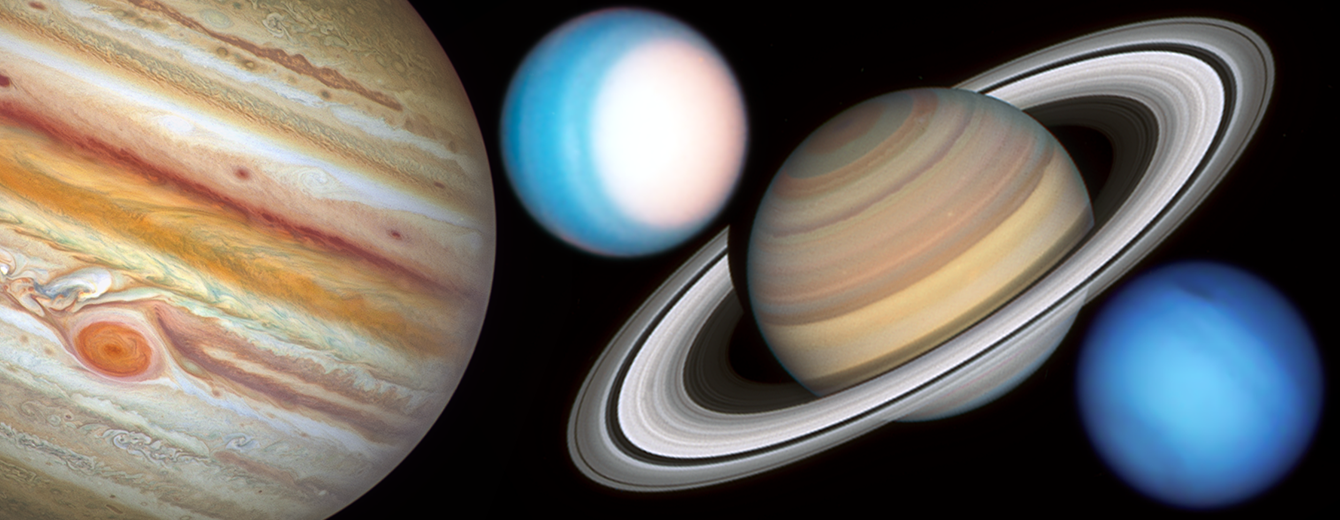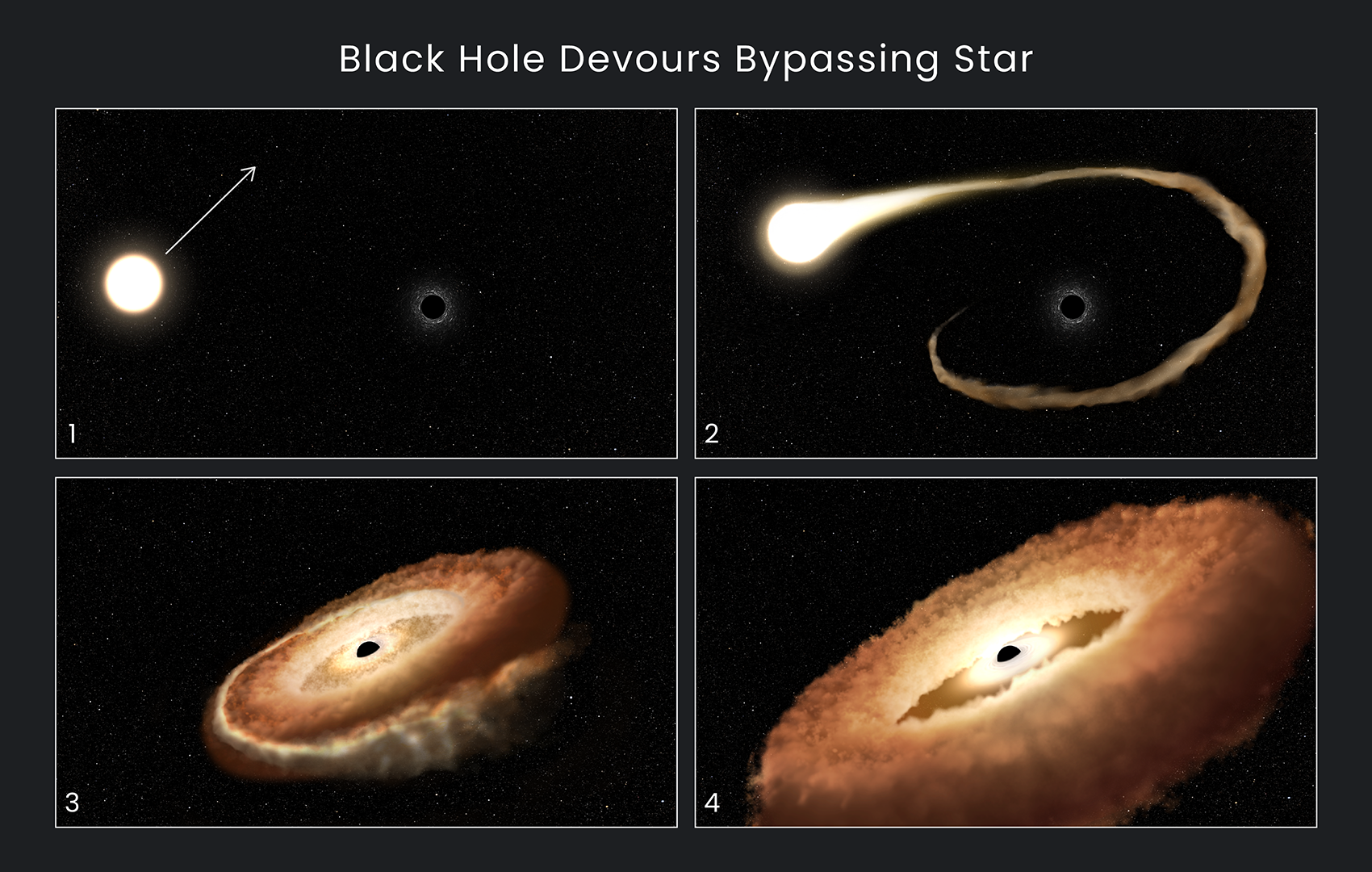Before Hubble, astronomers theorized the existence of supermassive black holes, but they had no conclusive evidence. Quasars, extremely bright quasi-stellar objects in remote active galaxies, indirectly hinted at their existence, but direct evidence of supermassive black holes didn’t come until 1994 when Hubble’s Faint Object Camera observed the heart of the giant elliptical galaxy M87. Hubble’s observations found a whirlpool of hot, ionized gas orbiting the heart of the galaxy at a speed of about 1.2 million miles per hour (550 kilometers per second). Only a supermassive black hole would have the gravitational power to create a vortex of hot gas at such velocities.

Supermassive black holes are millions to tens of billions times the mass of the Sun. A Hubble galaxy census showed that a black hole’s mass is dependent on the mass of its host galaxy’s central bulge of stars: the larger the galaxy, the larger the black hole. This close relationship may be evidence that black holes grew along with their galaxies, devouring a fraction of the galaxy’s mass and intrinsically linking the black hole to the galaxy’s evolution.
Black holes aren’t just associated with galaxies. Astronomers estimate that 100 million black holes roam the stars of our Milky Way galaxy alone. In 2022, two teams using Hubble data measured how a suspected isolated black hole’s gravity acted like a lens, warping and deflecting the light from a background star. Their measurements indicate the lensing object’s size is either a black hole or a compact neutron star.



NASA; Director, Producer & Editor: James Leigh
Learn More
Hubble Science Highlights
Discover the breadth and depth of Hubble's exciting discoveries!

Studying the Planets and Moons
Hubble’s systematic observations chart the ever-changing environments of our solar system's planets and their moons.

Tracking Evolution in the Asteroid Belt
These conglomerates of rock and ice may hold clues to the early solar system.

Uncovering Icy Objects in the Kuiper Belt
Hubble’s discoveries helped NASA plan the New Horizon spacecraft’s flyby of Pluto and beyond.

Exploring the Birth of Stars
Seeing ultraviolet, visible, and near-infrared light helps Hubble uncover the mysteries of star formation.

The Death Throes of Stars
When stars die, they throw off their outer layers, creating the clouds that birth new stars.

Finding Planetary Construction Zones
Hubble’s sensitivity uncovers the seeds of planets in enormous disks of gas and dust around stars.

Recognizing Worlds Beyond Our Sun
Hubble can detect and measure the basic organic components for life on planets orbiting other stars.

Seeing Light Echoes
Like ripples on a pond, pulses of light reverberate through cosmic clouds forming echoes of light.

Tracing the Growth of Galaxies
Hubble's Deep Field observations are instrumental in tracing the growth of galaxies.

Galaxy Details and Mergers
Galaxies evolve through gravitational interaction with their neighbors, creating a menagerie of forms.

Homing in on Cosmic Explosions
Hubble helps astronomers better understand and define some of the largest explosions in the universe.

Discovering the Runaway Universe
Our cosmos is growing, and that expansion rate is accelerating.

Focusing in on Gravitational Lenses
Gravitational lenses are 'Nature's Boost', expanding our view deeper into space and farther back in time.

Shining a Light on Dark Matter
The gravitational pull of dark matter guides the formation of everything we can see in the universe.

Mapping the Cosmic Web
Filaments and sheets of matter create an interconnected web that forms the large-scale structure of the universe.





